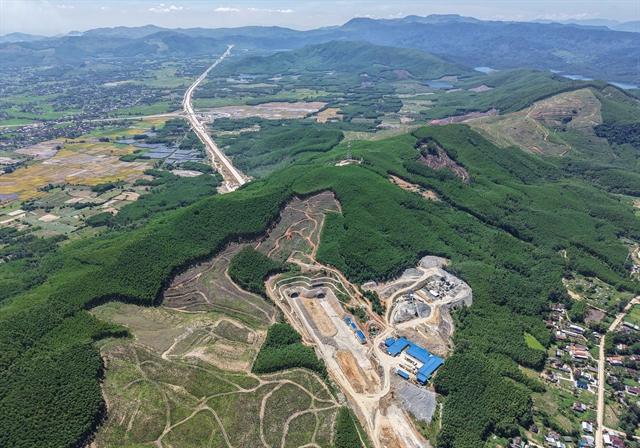The Ministry of Construction has proposed a PPP-based plan to expand 18 sections of the Eastern North–South Expressway.

HÀ NỘI — The Ministry of Construction has submitted a proposal to expand parts of the Eastern North–South Expressway using the Public–Private Partnership (PPP) model, with an initial focus on 18 component projects stretching over 1,144km.
According to the ministry, the expressway spans approximately 2,063km from the Hữu Nghị Border Gate in Lạng Sơn Province to Cà Mau City. To date, 1,443km have been opened to traffic, while 597km are under construction. Most of this is limited to four lanes.
Although some sections are being developed to full expressway standards, by the end of 2025, around 1,222km will still remain at the limited four-lane scale, especially in stretches such as Mai Sơn–Cam Lộ, Quảng Ngãi–Vĩnh Hảo and Mỹ Thuận–Cà Mau.
The ministry recommends prioritising upgrades along the Hà Nội–HCM route to meet national expressway standards. This would involve expanding 18 component projects, eight of which were built between 2017 and 2020 and 10 from 2021 to 2025.
The proposed expansion would upgrade these sections to a six-lane configuration at an estimated cost of VNĐ152.1 trillion (US$5.8 billion).
Studies suggest that four high-traffic sections from the 2017–2020 phase (totalling 255km) could recover costs within three to 13 years without needing state support. These include Mai Sơn–QL45, QL45–Nghi Sơn, Nghi Sơn–Diễn Châu and Phan Thiết–Dầu Giây.
Three Build-Operate-Transfer (BOT) projects from the same phase — Diễn Châu–Bãi Vọt, Nha Trang–Cam Lâm and Cam Lâm–Vĩnh Hảo — already have investors, but may face difficulties raising further funds for expansion.
The remaining 11 projects, mostly from the 2021–2025 period, cover 711km and would require over VNĐ100 trillion ($3.8 billion). Due to lower traffic demand, these would likely need state budget support if expanded under the PPP model.
To maintain progress on public investment disbursement, the ministry has proposed that state funds continue to be used for expansion, with toll collection applied after completion as approved by the National Assembly.
"This option allows the Government to set service fees, not for profit, balancing the interests of the State, citizens and businesses, and keeping transport costs reasonable," the ministry stated.
The ministry has also explored various PPP approaches in line with Resolution 68 and directions from the Government. These include BOT contracts or hybrid models combining BOT with operation and maintenance agreements.
The BOT model is seen as the most feasible, with the option to split the projects into major northern and southern packages to ensure consistency and coordination.
However, PPP faces uncertainties linked to projected transport demand, economic growth and future infrastructure developments such as high-speed rail. If investors cannot be secured or if PPP fails, the State may still have to intervene.
To help recoup investment, the ministry has proposed that toll collection for publicly funded expressway segments begin in January 2026. If private investments are secured for PPP expansions, toll collection would be transferred accordingly.
The ministry emphasised that PPP projects should be launched only after warranty periods for previously completed works have ended. This would help prevent legal disputes and avoid public misunderstanding over rework on newly completed roads. — VNS





